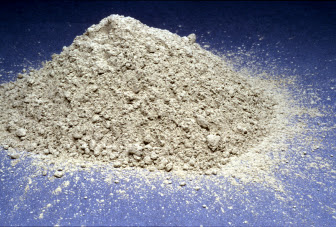INTRODUCTION OF STONES
Rock and stones is a naturally occurring solid
aggregates of minerals and mineraloids in term of geology. Rock has variety
uses in building such as blocks in masonry wall, slabs in floorings, aggregates
in concrete and terrazzo in floor finishes. There are two types of stones
artificial stones and natural stones.
ARTIFICIAL
STONES
Artificial stones also known as engineered stone. Artificial stones are usually use with Portland cement with low water ratio. There are two types of artificial stones used in manufacturing such as calcareous stone materials and siliceous materials. The nature, colour and quality of aggregates will determine the aesthetic appearances of artificial stones. Artificial stones widely use in outdoor and indoor floorings, outside claddings, internal facings due to its wide dimensional range and good looking appearance.
NATURAL
STONES
Igneous rock formed from the cooling and solidification of magma and lava. Igneous rocks are geologically important because they gives information about composition of mantle. Igneous rock consists of batholiths, laccoliths, sills and dikes. Granite is the main igneous rock use in building construction. Granite has a hard and durable and able to withstand knocks and abrasion. Besides, granite does not carry out chemical reaction with other materials. Granite used as a damp-proof courses or bases in construction area.
Sedimentary stones is formed from by broken action
of wind, water or ice to the older stone. Some of the sedimentary stones formed
by the accumulation of organic materials. The main example of sedimentary
stones are limestone and sand stone. Lime stone consists of calcium carbonate
and mixture of magnesium carbonate. They have variety colours of calcium
carbonate. Limestone are soluble in water due to they containing carbon
dioxide. Sandstones is make up of fine
quarts with feldspar and bound together by cement. There are 3 types of
sandstones siliceous sandstones, calcareous sandstones, and dolomite.
 |
| Make of natural stones |
METAMORPHIC
ROCK
MARBLE
Marble is form from the recrystallization process. Marble form naturally from limestone with heat and pressure over years in earth's crust. Marble is very hard and compact. Chemically, marble consists of calcite, dolomite and serpentine minerals. Marble has high value for its beauty, strength and good resistance to fire and erosion. Ancient Iranian and Greek were a very good user of marble in building. Large blocks of colored marble are used for columns, floors, and other parts of buildings. Smaller pieces of marble are crushed or finely ground and used as abrasives in soaps and other such products. Crushed or ground marble is also used in paving roads and in manufacturing roofing.
Marbles show variety of textures on account of existing minerals & re-crystallization patterns. Texture depends upon form, size, uniformity of grain arrangements. Marbles can be classified on the basis of the following factors :-
Calcite Marble - Mostly CaCo3; MgCo3<0.50%
Dolomite Marble - Having > 40% MgCo3
Magnesium Marble - MgCo3 between 5 to 40%
Serpentine Marble - remobilised marble due to the effect of Thermodynamic metamorphic wherein serpentine is prominent
Onyx Marble - Lime carbonate deposition on account of cold water solution activity
Impurities in Marble
 |
| Impurities in Marble |
The following are the major mineral impurities in marble:
- Quartz
- Tremolite Actinolite
- Chert
- Garnet
- Biotite
- Muscovite
- Microline
- Talc
- Fosterite
The
following are the major chemical impurities in marble:
- SiO2
- Fe2O3
- 2Fe2O3
- 3H2O
- Limonite
- Manganese
- Al2O3
- FeS2(pyrite)
SLATE
Slate consists of quarts, muscovite, illite, biotite, chlorite, hematite, pyrite, apatite, graphite, kaolin, magnetite, tourmaline, zircon and feldspar. Slate can be used as material to make roof. Slate has a low water absorption index of less than 0.4%. This advantageous make slate resistant to frost damage and breakage due to freezing. Slate also use as interior and exterior flooring system. Chemical sealants often used on the slate tiles to increase its durability, appearance, stain resistance, and reduce of surface smoothness. Slate also is a good electrical insulator and fireproof and it is used as electric switchboards and relay controls for large electric motors. It also used as billiard table tops in laboratory due to its thermal stability and chemical inertness.

















































